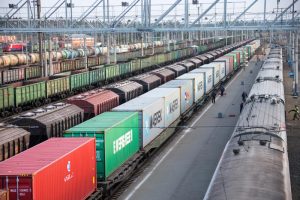TRINIDADIAN Engineering Consultant, Richard Small has floated that Guyana can pursue several sustainable infrastructure options, as it seeks to develop its infrastructure from imminent oil and gas revenues.
Small was speaking at a panel discussion entitled: “Infrastructure Development in an Oil and Gas Economy, The Guyana Reality”, on Friday. This discussion was organised as part of the Eighth International Road Federation (IRF) Caribbean Regional Congress, which was opened on Wednesday and concluded on Friday. As it relates to the development of infrastructure in Guyana and in the wider Caribbean region, Small stressed: “We need to move away from thinking strictly and solely about road construction, overhead bridge construction, etc.”

Specifically in Guyana, he noted, there are several infrastructural developmental avenues that can be pursued in tandem with the country’s aspirations of being a sustainable, ‘Green State’. One such avenue was the development of a “transportation corridor”. “A transportation corridor is a mechanism in infrastructure facility that allows for mass movement of things and people,” he explained. On that transportation system, also, he noted that utilities such as a communications system can be integrated.
J Zietsman (2006) in his study on transportation corridors in Texas and South Africa, noted: “A sustainable transportation system seeks to ensure that the major issues of economic development, social equity and environmental stewardship are addressed within the transportation sector.” And according to Small, this corridor can be one that reduces lengthy transportation times, thus bolstering the exchange of goods and services and driving economic activity. “You have stops and points along the way and from there you have your network of roads, but that (the corridor) is the main artery,” Small explained further and said that instead of crafting massive roadways from, for example, Georgetown to Lethem, he indicated that a corridor can be used instead.
Small noted that transportation corridors can also be built on rivers, as is the case with the Mississippi River in the US, and could integrate Guyana’s major ports.
The consultant also floated a “Smart City” initiative. The Smart City initiative is a model which taps into available capital (like that which is expected to be available from oil revenues) to harness technology in an attempt create novel cities.
According to him, these cities are crafted from what is known as the “core infrastructure” and would encompass an adequate supply of utilities, proper sanitation measures, efficient transport, affordable housing, technology and connectivity, good governance, health and education considerations and of course, a sustainable environment. With both ideas, Small highlighted that they were just mere ideas for considerations. Small opined that a common pitfall to development in the Caribbean is that governments and oppositions tend to be myopic and do not see beyond the five-year election period.
He however noted that Guyana should safeguard against this. “Planning is necessary. It has to be a thirty year view… you cannot be thinking and acting in the short-term view, or else you will not achieve the maximum desired results,” he said. “It is very important in Guyana’s specific case- being so pristine and environmentally sensitive- that we also have to have to take into consideration that the role of the structure of development does not negatively impact on the environment,” he said.



.jpg)









